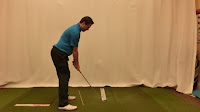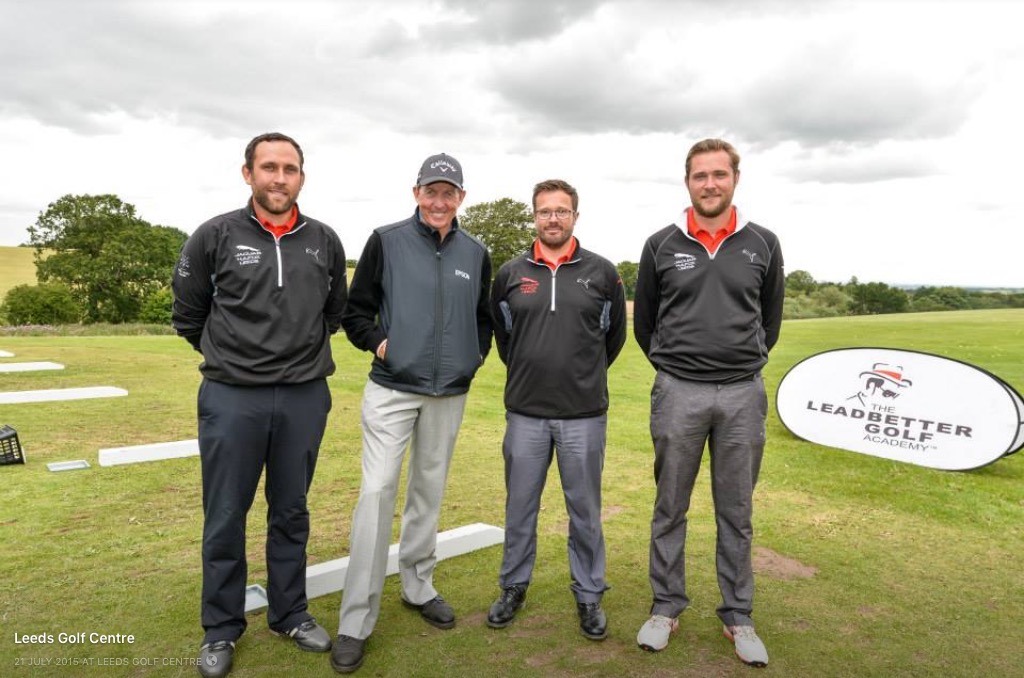New Ball Flight Laws
This is probably one of the simplest articles
I am going to write, but I believe one of the most important for golfers of all
levels. It also might be a little shocking, because in recent times the
facts about impact that most coaches have been teaching over the last 20 years,
and the general thinking from most golfers, has been proven to be
wrong. If I were to tell you that approximately 80% of players who
slice the ball have a square clubface at impact, your first reaction is
probably to think that’s impossible; the clubface must be open. Before you read
the rest of the article, try and understand just how important this is.
Impact is the only thing that determines where the balls goes: the shape
of the ball, the height of the shot, the distance; it is everything.
Impact is golf, and to develop your golf you MUST know how impact works – at
least with the basic laws. It would be like a race car designer making a
new car but not really understanding the basic laws of what makes a car go fast,
or how to be stable in a corner, or a weight loss trainer not understanding the
basic laws of how the body loses or gains weight. If you want to develop
your golf, it is vital you know the impact laws.
The Old Law – Wrong
The old laws, which are incorrect, say that it is the path of the swing
which determines the starting direction of the ball. For example, if the
path is Out – To – In (Left of the target line) the ball will start to the left
side of the target, or if the path was In – To – Out (Right of the target
line), the ball would start the right side, or lastly if the path was square to
the target line, the ball will start on target. It was then thought that
the clubface position is what creates shape, and determines the finishing
position of the shot. To give you a couple of examples:
1) If the swing path is 10 degrees left of
the target, and the club face is square to target, the ball would start 10
degrees left and fade back to finish on the target.
2) If the path is 8 degrees right of
target, and the clubface is 4 degrees open, the ball would start 8 degrees to
the right and draw back to finish 4 degrees right of target.
The New Laws – Right
Technology is now available that collects all sorts of swing data: path,
clubface position, speed, ball spin, shape, centeredness of impact on face, etc.,
and this technology tells us the true impact laws with no guess work
involved. This technology has told us that the ball will not start in the
direction of the path but actually approx. 70% towards the direction of the
clubface. In my opinion, so that the laws remain simple and
understandable, you can think that the ball starts in the direction of the
clubface. Shockingly, this means that the new laws are the opposite of
the old laws; the clubface determines the starting direction of the shot, and
the path determines the spin and shape of the shot. So if use the same
two examples as the old laws, with the new laws you can see the problem this
might have been causing players:
1) If the swing path is 10 degrees left of
the target, and the club face is square to target, the ball would start on
target (in the direction of the clubface) and slice to finish to the right of
target. Perhaps now you can see why 80% of slicers have their clubface
square at impact.
2) If the path is 8 degrees right of
target, and the clubface is 4 degrees open, the ball would start slight right
of the target (around 4 degrees) and draw to finish around the target area.
An important point to note is that the difference between clubface and
path will determine how much the ball will slice or hook. In the first
example, there is a 10 degrees difference between clubface and path, which will
create a lot of slice, but in the second example there is only 4 degrees difference
between clubface and path, meaning there will be only a small amount of hook,
or draw.
So how does this help you?
If you understand these basic laws correctly, you can start to analyse
your own shot and make improvements in your technique, but more importantly,
you will not analyse your shot incorrectly, misunderstanding what is happening
at impact, sending your development in the wrong direction. Below are a
few examples of common misunderstanding that I see daily.
1) Slice – Let use the example above
of a ball starting straight, and slicing to the right. Nearly every time
I see this on the range, the players will be trying to release their hands
faster at impact, closing the clubface, because they think the clubface is
open. But we now know that with most players, the clubface is not the
problem with this shot; it is the swing path. This player needs to forget
the clubface and learn to swing more to the right. To do this, I have
suggested 4 keys to helping you develop a path more to the right.
l - Align your body more to the right side; most slicers
will aim too much to the left, not helping develop a path to the right.
l - Place your hands a little in front of the ball at
address.
l - Learn to move your weight to your left foot in the downswing,
and stay there at impact.
l - Feel the end of the club swinging to the right and up
through impact.
2) Pull Hook – Often, I see
players practicing and hitting what they think to be a pull hook because they
see the ball starting left and hooking. They think they must be swinging
out–to–in, with a closed clubface. In their practice, they start trying
to swing more in–to-out, keeping the clubface open. This is a mistake,
and the cause is not understanding basic impact laws. What is really happening
in this shot is the swing path will be in–to–out, with the clubface square to
the target or a little closed. This results in the ball starting straight
and then quickly hooking to the left, because the ball comes off the clubface
very quickly. By the time the player looks up and sees the ball, it is
already left of the target, making them think it started to the left.
Maybe you can see now how important the basic impact laws are. This
player does not need to swing more in–to–out; in fact, this is making the
problem worse. This player needs to swing more to the left, keeping the
clubface the same; the exact opposite of what he would have done. Here
are 4 keys points to get you swinging to the left.
l - Make sure you are not aligned to the right in address; a
little left of target will help you.
l - Keep the ball to the left side in address.
l - In the downswing, turn your shoulders so they are a
little open to the target at impact.
l - Feel the end of the club swinging left through impact,
and after impact.
Draw: Align
your body more to the right side
Fade: Align
more to the left of target
Draw: Position
your hands a little in front of the ball
Fade: Ball
position left side
Both: Move
your weight to your left foot in the downswing and stay there through impact.
Draw: Feel
the end of the club swinging
to the right and up through impact.
Fade: Feel
the end of the club swinging left through impact and after.









